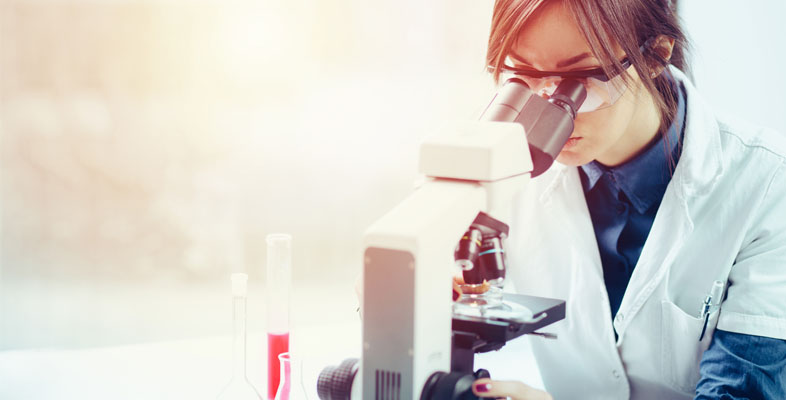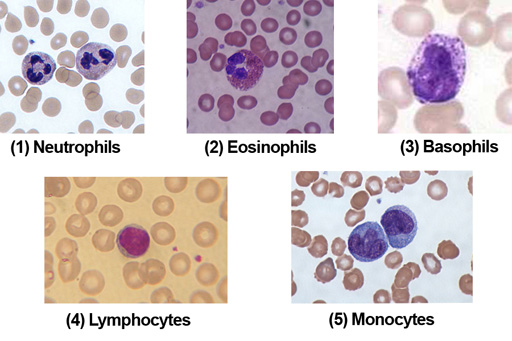3.1 Observing different types of leukocyte
One of the most basic histological tests carried out is the differential white blood cell count in which the numbers of different types of leukocyte are counted. This process can help clinicians to diagnose diseases.
There are five main types of leukocyte, each with different functions.
- Neutrophils are normally the predominant leukocyte in blood. They are involved in fighting infection by internalising (phagocytosing) foreign material, including many pathogens. Neutrophils may be increased in response to bacterial infection or inflammatory disease, although they may decrease in severe infection, or in response to cytotoxic drugs used for cancer therapy.
- Eosinophils increase in response to some parasite infections and in allergies.
- Basophils increase in some long-standing inflammatory conditions or in some hypersensitivity reactions.
- Lymphocytes may increase in bacterial or viral infections. Decreased lymphocyte numbers are seen, for example, in the later stages of HIV infection.
- Monocytes are scavengers that phagocytose pathogens and migrate into tissues to clear debris following infection, inflammation or cell damage. They may be increased in inflammatory conditions.
The cells differ in appearance when viewed in section under a microscope, as shown in the images below.
The normal range for each of these cell types is quite variable, and is expressed as number of cells per litre of blood (see the table below). For example, if you counted 100 leukocytes, you would expect to find that 20–40 of them would be lymphocytes.
| Leukocyte type | Cells per litre | Percentage |
|---|---|---|
| Neutrophils | 2–7 x 109 | 40–80% |
| Eosinophils | 0.02–0.5 x 109 | 1–6% |
| Basophils | 0.02–0.1 x 109 | |
| Lymphocytes | 1–3 x 109 | 20–40% |
| Monocytes | 0.2–1.0 x 109 | 2–10% |
Values outside the normal range often indicate some kind of disease. High levels of any of them can indicate overproduction of that cell type, for instance, a leukaemia.

